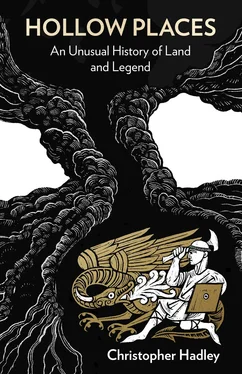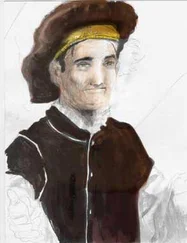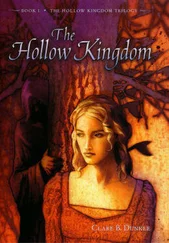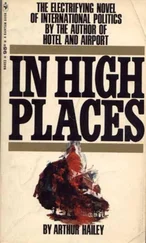Twenty-five children were born in the Pelhams in 1834, to a thatcher, a shoemaker, two yeoman farmers and twenty-one agricultural labourers. At the beginning of the 1830s, 62 per cent of men over twenty in the three Pelhams were agricultural labourers, a little higher than the Hertfordshire average and nearly three times the national one. By then considerably more families earned their living in England from trade, manufacturing or handicrafts, than worked on the land, but still agricultural labourers made up the single largest occupation group – some 745,000 of them. Most of us have more agricultural labourers in our family tree than any other ancestors. ‘Agricultural labourer’ does not necessarily tell the whole story. In the column marked ‘Occupation’ on the 1841 Census, the enumerators would have written the diminutive ‘Ag Lab’ ad nauseam , so it is disappointing that they didn’t relieve the boredom by being more precise. Where were the ploughmen, the carters, the hedgers, the headmen, the woodcutters and the common taskers? It has been said that there were hierarchies among farm workers as intricate as that among the gentility.
It is impossible to consider this period without turning to the campaigning journalist and chronicler of the pains and pleasures of rural life William Cobbett. On one of his ‘rural rides’around England in the 1820s he encountered a group of women labourers in ‘such an assemblage of rags as I never before saw’. And of labourers near Cricklade: ‘Their dwellings are little better than pig-beds and their looks indicate that their food is not nearly equal to that of a pig. Their wretched hovels are stuck upon little bits of ground on the road side … It seems as if they had been swept off the fields by a hurricane, and had dropped and found shelter under the banks on the road side! Yesterday morning was a sharp frost; and this had set the poor creatures to digging up their little plats of potatoes. In my whole life I never saw human wretchedness equal to this; no, not even amongst the free negroes in America.’
Accommodation for these people was notoriously bad: ‘The majority of the cottages that exist in rural parishes,’ wrote the Reverend James Fraserin the late 1860s, ‘are deficient in almost every requisite that should constitute a home for a Christian family in a civilized community.’
Labourers in the Pelhams were probably not living on roots and sorrel, nor had they – in the words of Lord Carnarvon– been reduced to a plight more abject than that of any race in Europe. Housing may also have been better than mud and straw hovels found elsewhere. Over forty new houses were built in the first thirty years of the nineteenth century, which might suggest a benevolent land-owning class, but the population of the villages increased as well, so the ratio of families to houses barely changed. In the early 1830s, some 228 families shared 177 homes.
The Reverend Fraser disapproved of such cramped conditions, adding that, ‘it is impossible to exaggerate the ill effects of such a state of things in every aspect – physical, social, economical, moral, intellectual ’. What did such an existence do to their minds? Did it make them more or less likely to see holes and think of dragons?
Reading contemporary accounts of agricultural labourers, we are told that they are not just ill-paid and ill-fed and ill-clothed but also unimaginative, ill-educated, ignorant, illogical and brutish. ‘They seem scarcely to know any other enjoyments than such as is common to them, and to the brute beasts which have no understanding … So very far are they below their fellow men in mental culture,’ wrote John Eddowes in his 1854 The Agricultural Labourer as He Really Is . This is the cruel stereotype that christened every Ag Lab ‘Hodge’and gave him an awkward gait, ungainly manners, a slow wit and an indecipherable patois. Another observer described the limited horizons of such a labourer: ‘Like so many of his friends, he had never been out of a ten-mile radius; he had never even climbed to the top of yonder great round hill.’ And there were said to be rustics who lived within ten miles of the sea but had never seen it. They were ‘intellectual cataleptics’, interested only in food and shelter, according to one mid-century journalist.
In one of his characteristically oblique and brilliant studies, the historian Keith Snell set out to uncover whether this really was all that the labourer wanted by scouring letters home from emigrants. Several themes stood out. They valued their families, wanted to be free from the overseer of the poor, craved secure work and better treatment by those offering it, and they demonstrated a marked interest in their environment – in the land and the livestock.
This only tells us about those who could write, but it gets around the famous reticence of the labourer, the mysterious barrier of ‘Ay, ay’, ‘may be’, ‘likely enough’ that greeted any enquiry, and contemporary observers attributed to stupidity.
Labourers were not alone, their employers were not celebrated for their conversational skills: In his Professional Excursions around Hertfordshire published in 1843, the auctioneer Wolley Simpson gives a wonderful description of a farmer which reads like the children’s game where you have to avoid saying ‘yes’ or ‘no’.
Q. The Land you hold of the Marquis, is very good is it not Mr. Thornton?
A. It ai’nt bad Sir.
Q. The Timber I understand in this neigh-bourhood is very thriving.
A. Why I’ve seen worse Sir.
Q. You have an abundance of chalk too which is an advantage?
A. We don’t object to it Sir.
Q. You are likewise conveniently situated for markets?
A. Why we don’t complain Sir.
Q. You are plentifully supplied with fruit if I may judge from your Orchards?
A. Pretty middling for that Sir.
Q. Corn is at a fair price now for you?
A. It be’nt a bit too high Sir.
Q. The Canals must facilitate the convey-ance of produce considerably?
A. They are better than bad roads to be sure Sir.
And so on in the same vein. Simpson concludes that ‘evasion had become habitual, and I believe it to be a principle in rural education’.
Did village schools teach anything else besides?
The traditional way to measure literacy is to count the number of people who could sign their name on marriage licences and other documents. Although the method has its detractors, it is still a useful ready reckoner. In 1834, two marriages in the Pelhams involved agricultural labourers. All made their mark, with the exception of one witness, sixty-five-year-old Mary Bayford. This is not surprising as not all their employers could write: in the previous year the farmer and Vestry (local council) member John Hardy made his mark in the Overseers accounts.
There had been a charity school in Furneux Pelham since 1756 thanks to a bequest by the widow of the Reverend Charles Wheatly to provide a proper master to teach eight poor boys and girls to read and write. In an 1816 reportto the parliamentary Select Committee somebody observed of the Pelhams: ‘The poor have not sufficient means of education; but the minister concludes they must be desirous of possessing them.’ By 1833, there was a schoolmaster and mistress looking after twenty-one boys and girls, but even with the existence of a school and the growing attendance figures, there were no guarantees that children would turn up regularly. In January 1854, the Hertfordshire school inspector wrote: ‘In country parishes boys are employed from three to five months in the year after the age of seven, and they are withdrawn from school altogether between ten and eleven. I believe that at present there are scarcely any children of agricultural labourers above that age in regular attendance at schools in my district.’
Читать дальше












